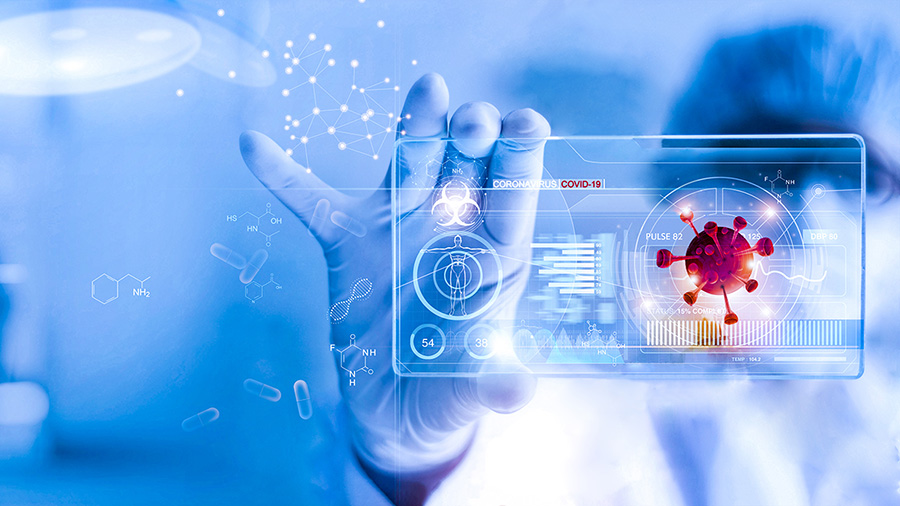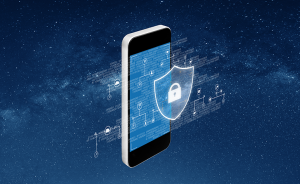
Rise of Mobile Health Monitoring In Covid-19 Pandemic
With a tremendous influx of patients, the pandemic had caused a significant rise in workloads at a number of hospitals across the globe, prompting institutions to swiftly enhance the speed and efficiency of their workflows. The medical technology sector produces a wide range of devices to diagnose, monitor, and treat patients, and it plays an important role in assisting healthcare organisations in improving patient outcomes, lowering healthcare costs, increasing efficiency, and providing better patient care. New regulations, digitisation, data analytics, artificial intelligence, automation, and the growth of value-based healthcare are just a few of the difficulties and opportunities that the healthcare industry and its usage of mobile devices are experiencing. Mobile technology, including handheld computers and point-of-care gadgets that assist doctors while they give bedside care, has been employed by healthcare providers for some time. These mobile medical equipment, which are frequently carried around on a trolley to each patient, improve accuracy by eliminating the need to manually enter patients data. They allow healthcare staff to link to patients records and streamline the specimen collection process.
In numerous ways, mobile technologies have improved the speed and quality of care. During shift changes, for example, patient information is frequently lost in the move from one team to the next. Mobile devices, on the other hand, make it easy for physicians to capture details and communicate them with other medical colleagues, which benefits patients because they don’t have to explain things to the next clinician on duty.
Mobile technology, including handheld computers and point-of-care gadgets that assist doctors while they give bedside care, has been employed by healthcare providers for some time. These mobile medical equipment, which are frequently carried around on a trolley to each patient, improve accuracy by eliminating the need to manually enter patients data. They allow healthcare staff to link to patients records and streamline the specimen collection process.
In numerous ways, mobile technologies have improved the speed and quality of care. During shift changes, for example, patient information is frequently lost in the move from one team to the next. Mobile devices, on the other hand, make it easy for physicians to capture details and communicate them with other medical colleagues, which benefits patients because they don’t have to explain things to the next clinician on duty.
The Rise of Internet of Medical Things (IoMT)
While the Internet of Medical Things (IoMT) has enhanced the speed, quality, and interconnection of health care in many ways, mobile devices in healthcare settings must be closely managed to ensure that they do not stop working in the middle of clinical rounds, disrupting patient care. To enhance patient outcomes, the IoMT brings together people (patients, caregivers, and clinicians), data (patient or performance data), processes (care delivery and patient support), and enablers (connected medical devices and mobile applications). However, as digitalisation and interconnectivity expand, so does complexity, and hospital IT departments must ensure that technology concerns do not obstruct medical professionals from providing critical frontline treatment. In the healthcare industry, digitization is not only about helping patients with their ailments or doctors with their duties. It also speeds up workflows, improves security for medical workers and facilities, and gives patients more transparency.
As health care has become more digitised, medical gadgets and traditional IT infrastructure have become increasingly linked. As a result, medical IT has more points of failure than ever before.
However, as digitalisation and interconnectivity expand, so does complexity, and hospital IT departments must ensure that technology concerns do not obstruct medical professionals from providing critical frontline treatment. In the healthcare industry, digitization is not only about helping patients with their ailments or doctors with their duties. It also speeds up workflows, improves security for medical workers and facilities, and gives patients more transparency.
As health care has become more digitised, medical gadgets and traditional IT infrastructure have become increasingly linked. As a result, medical IT has more points of failure than ever before.
Security Risks and MDM Solution
The pandemic’s unexpected impact on healthcare professionals prompted several to launch huge mobile device adoption campaigns that necessitated accurate provisioning prior to usage. MDM solutions made it easier for hospitals to give devices to users with pre-installed software while ensuring that security configurations met with the healthcare organisation’s privacy compliance requirements. These capabilities have helped healthcare organisations to quickly pivot in the face of the pandemic while reducing the security concerns associated with rapid adoption. However, as the number of new mobile devices grows, so does the need to guarantee that they are working properly. A centralised monitoring strategy, in which a healthcare organisation monitors both medical equipment and traditional IT, is the best method to accomplish this.
If you’re interested in implementing MDM solutions into your businesses, feel free to Contact Us, we’ll provide one of the best MDM solutions in the current market for your businesses.
These capabilities have helped healthcare organisations to quickly pivot in the face of the pandemic while reducing the security concerns associated with rapid adoption. However, as the number of new mobile devices grows, so does the need to guarantee that they are working properly. A centralised monitoring strategy, in which a healthcare organisation monitors both medical equipment and traditional IT, is the best method to accomplish this.
If you’re interested in implementing MDM solutions into your businesses, feel free to Contact Us, we’ll provide one of the best MDM solutions in the current market for your businesses.
In SYNDES TECHNOLOGIES Your Security Is Our Priority.
Sorry, the comment form is closed at this time.






